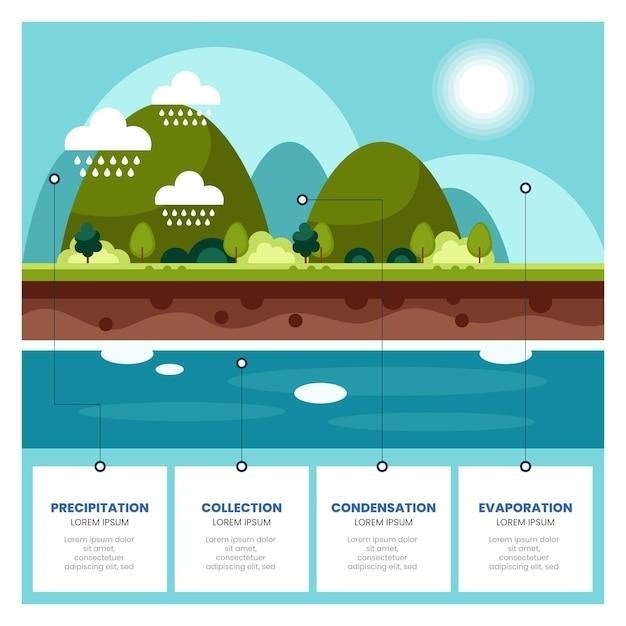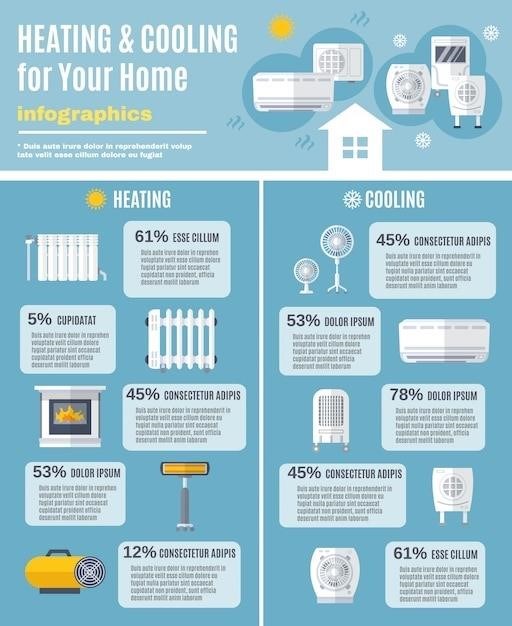King County Surface Water Design Manual⁚ A Comprehensive Guide
The King County Surface Water Design Manual is a technical manual for storm drainage systems in King County, Washington. It provides requirements and guidelines for stormwater management and surface water system design in unincorporated King County. The manual outlines the design requirements, procedures, and guidance for development applications in unincorporated King County. It also includes information on flow control design, maintenance requirements, and resources and guidance for stormwater projects.
Overview
The King County Surface Water Design Manual (SWDM) serves as a comprehensive guide for managing stormwater and surface water systems within King County, Washington. It provides a detailed framework for addressing the challenges associated with stormwater runoff, ensuring the protection of water quality and the health of aquatic ecosystems. This manual is a valuable resource for developers, engineers, and other professionals involved in planning, designing, and implementing stormwater management practices within the county. The SWDM aims to minimize the impacts of new development and redevelopment on natural and existing man-made drainage systems, ensuring the sustainability of the county’s water resources.
The manual is regularly updated to reflect the latest scientific advancements, regulatory changes, and best practices in stormwater management. It includes comprehensive information on a wide range of topics, including stormwater treatment, flow control design, erosion and sediment control, and water quality management. The SWDM also provides specific guidance on the design and implementation of various stormwater control measures, such as bioretention systems, infiltration trenches, and stormwater ponds, to achieve desired water quality and quantity goals.
This manual is an essential tool for ensuring compliance with local, state, and federal regulations related to stormwater management. It helps developers and engineers navigate the complexities of stormwater regulations and implement sustainable and environmentally responsible solutions for managing stormwater runoff in King County.
Purpose and Scope
The King County Surface Water Design Manual (SWDM) serves a vital purpose in ensuring the responsible management of stormwater runoff within King County, Washington. Its primary objective is to mitigate the negative impacts of development and redevelopment on the county’s surface water resources, safeguarding the health of aquatic ecosystems and protecting water quality. The SWDM establishes a comprehensive framework for stormwater management, encompassing a wide range of activities, from planning and design to construction and maintenance.
The scope of the SWDM extends to all new development and redevelopment projects within unincorporated King County. This includes residential, commercial, industrial, and infrastructure projects, ensuring that all development activities are conducted in a manner that minimizes their impact on the surrounding environment. The manual provides specific requirements, standards, and guidance for the design and implementation of stormwater management systems, ensuring that these systems effectively capture, treat, and manage stormwater runoff.
The SWDM’s scope also encompasses the protection of existing natural drainage systems, such as streams, wetlands, and lakes. It emphasizes the importance of preserving the natural functions of these ecosystems, promoting sustainable development practices that minimize disturbance to these valuable natural resources. The manual promotes the use of best management practices (BMPs) to achieve these goals, ensuring that stormwater runoff is managed in a way that protects the environment and promotes the health of aquatic ecosystems.
Key Requirements and Standards
The King County Surface Water Design Manual (SWDM) sets forth a comprehensive set of requirements and standards that govern the design and implementation of stormwater management systems within unincorporated King County. These requirements are designed to ensure that all development projects contribute to the protection and preservation of the county’s valuable surface water resources. The SWDM addresses a wide range of aspects, including stormwater quality control, flow control, erosion and sediment control, and the preservation of existing natural drainage systems.
One of the key requirements outlined in the SWDM is the implementation of best management practices (BMPs) to minimize the impacts of stormwater runoff on receiving waters. These BMPs include a range of techniques, such as bioretention, infiltration, and detention, designed to capture, treat, and release stormwater runoff in a manner that minimizes its impact on water quality and aquatic ecosystems. The manual also specifies requirements for the design and construction of stormwater conveyance systems, ensuring that these systems are adequately sized and designed to handle the anticipated volumes of runoff.
In addition to these technical requirements, the SWDM also emphasizes the importance of a collaborative approach to stormwater management. It encourages developers, engineers, and local agencies to work together to ensure that stormwater management systems are effectively integrated into development projects. The manual provides guidance on the review and approval process for stormwater management plans, ensuring that these plans meet the standards outlined in the SWDM.
Stormwater Management
The King County Surface Water Design Manual (SWDM) recognizes the critical role of effective stormwater management in protecting water quality and mitigating the impacts of development on natural drainage systems. The manual provides a comprehensive framework for managing stormwater runoff, emphasizing a holistic approach that integrates best management practices (BMPs) into the design and construction of development projects. The SWDM’s stormwater management principles aim to minimize the volume, velocity, and pollutant load of runoff entering receiving waters, ensuring the protection of aquatic ecosystems and the overall health of King County’s water resources.
The manual emphasizes the importance of source control, advocating for the implementation of measures that prevent pollutants from entering stormwater runoff in the first place. This includes strategies such as using permeable pavements, reducing impervious surfaces, and implementing good housekeeping practices on construction sites. The SWDM also promotes the use of a variety of BMPs, such as bioretention, infiltration, and detention, to capture, treat, and release stormwater runoff in a controlled manner. These BMPs are designed to remove pollutants, reduce runoff volume, and mimic the natural hydrological processes of the landscape.
Furthermore, the SWDM stresses the significance of proper maintenance and operation of stormwater management systems. The manual provides guidance on inspection and maintenance procedures, ensuring that these systems function effectively over time. The SWDM’s comprehensive approach to stormwater management underscores the county’s commitment to responsible development practices that protect the environment and ensure the long-term sustainability of its water resources.
Flow Control Design
The King County Surface Water Design Manual (SWDM) recognizes the importance of flow control design in mitigating the impacts of development on existing drainage systems. The manual provides detailed guidance on hydraulic analysis and design of flow control facilities, ensuring that stormwater runoff is managed effectively to prevent downstream flooding and erosion. The SWDM emphasizes a balanced approach that considers the needs of both development and natural drainage systems, aiming to minimize disruptions to existing hydrological patterns and maintain the health of aquatic ecosystems.
The SWDM outlines a range of flow control design techniques, including detention, retention, and infiltration. Detention facilities are designed to temporarily store stormwater runoff and release it gradually, reducing peak flow rates and minimizing downstream impacts. Retention facilities, on the other hand, are designed to permanently store stormwater, providing a valuable water resource that can be used for irrigation or other beneficial purposes. Infiltration facilities are designed to allow stormwater to seep into the ground, replenishing groundwater resources and reducing runoff volume.
The SWDM provides specific criteria and standards for the design of flow control facilities, considering factors such as the size and type of development, the characteristics of the drainage basin, and the capacity of downstream channels. The manual also emphasizes the importance of proper sizing and hydraulic analysis, ensuring that flow control facilities are designed to handle the anticipated stormwater runoff volumes effectively. The SWDM’s comprehensive guidance on flow control design empowers developers to create projects that are both functional and environmentally responsible.
Maintenance Requirements

The King County Surface Water Design Manual (SWDM) recognizes that proper maintenance is crucial for the long-term effectiveness and performance of stormwater management facilities. The manual outlines specific requirements for the maintenance of flow control, conveyance, and water quality facilities, ensuring their continued functionality and environmental integrity. The SWDM emphasizes the importance of proactive maintenance practices, including regular inspections, cleaning, and repairs, to prevent the deterioration of these vital infrastructure components.
The SWDM provides detailed guidance on maintenance procedures for various types of stormwater facilities, including detention ponds, retention ponds, infiltration trenches, and swales. The manual specifies the frequency and scope of inspections, addressing aspects such as debris accumulation, vegetation encroachment, and structural integrity. The SWDM also emphasizes the importance of maintaining proper hydraulic capacity, ensuring that the facilities can effectively handle stormwater runoff volumes and prevent flooding.
The SWDM encourages collaboration between developers and local authorities to ensure ongoing maintenance compliance. The manual outlines the roles and responsibilities of both parties, emphasizing the importance of clear communication and coordinated efforts in maintaining the functionality of stormwater facilities. The SWDM’s comprehensive guidance on maintenance ensures the long-term sustainability of stormwater management practices, safeguarding the health of aquatic ecosystems and mitigating the risks of flooding and erosion.
Adoption and Implementation
The King County Surface Water Design Manual (SWDM) has been adopted by various municipalities within King County, Washington, demonstrating its widespread acceptance as a comprehensive framework for stormwater management. This adoption signifies a commitment to implementing consistent and effective stormwater control practices throughout the region. The SWDM serves as a valuable resource for developers, engineers, and local authorities, providing a clear set of requirements and guidelines for designing and implementing stormwater management systems.
The adoption and implementation of the SWDM play a critical role in mitigating the impacts of urbanization on natural watercourses. The manual’s requirements help to ensure that new development projects are designed to minimize runoff volumes, improve water quality, and protect aquatic ecosystems. By adhering to the SWDM’s standards, municipalities can effectively manage stormwater runoff, reduce the risk of flooding, and promote sustainable development practices.
The SWDM’s adoption and implementation extend beyond unincorporated King County, with municipalities like Kent, Kirkland, Renton, Snoqualmie, and North Bend incorporating its principles into their local regulations. The manual’s widespread adoption highlights its importance as a regional standard for stormwater management, fostering a collaborative approach to protecting water resources and ensuring the long-term sustainability of development projects.
Resources and Guidance
The King County Surface Water Design Manual (SWDM) provides a wealth of resources and guidance to support the design and implementation of effective stormwater management systems. The manual offers comprehensive technical information, practical examples, and detailed specifications to assist developers, engineers, and contractors in complying with the required standards. The SWDM’s accessibility is further enhanced through its online availability, allowing users to readily access its content and keep abreast of any updates or revisions.
Beyond the manual itself, King County offers a range of additional resources and guidance to facilitate stormwater management compliance. These include technical assistance programs, educational workshops, and online tools designed to empower stakeholders with the knowledge and skills needed to effectively manage stormwater runoff. The King County website serves as a central hub for accessing these resources, providing a convenient platform for information dissemination and support.
The SWDM’s emphasis on providing comprehensive resources and guidance is crucial for achieving its objectives. By empowering stakeholders with the necessary tools and knowledge, the manual fosters a culture of responsible stormwater management, enabling communities to mitigate the impacts of development while protecting the health of local water bodies. This approach underscores the manual’s commitment to sustainability, ensuring that future generations can enjoy the benefits of clean and healthy water resources.
Updates and Revisions
The King County Surface Water Design Manual (SWDM) is a dynamic document that undergoes regular updates and revisions to reflect advancements in stormwater management practices, evolving regulatory requirements, and emerging scientific knowledge. The manual’s commitment to staying current is essential for ensuring its continued relevance and effectiveness in guiding development projects towards sustainable stormwater management.
The SWDM’s updates and revisions are driven by a collaborative process that involves input from various stakeholders, including engineers, scientists, regulators, and members of the community. This participatory approach ensures that the manual remains responsive to the needs and concerns of the community while incorporating the latest technical advancements.
The manual’s updates often address new stormwater treatment technologies, improved design techniques, and refined regulatory guidance. These revisions serve to enhance the manual’s effectiveness in reducing stormwater runoff, improving water quality, and mitigating the impacts of development on local ecosystems. The SWDM’s commitment to continuous improvement reflects its dedication to promoting responsible stormwater management practices and safeguarding the health of King County’s water resources for future generations.




